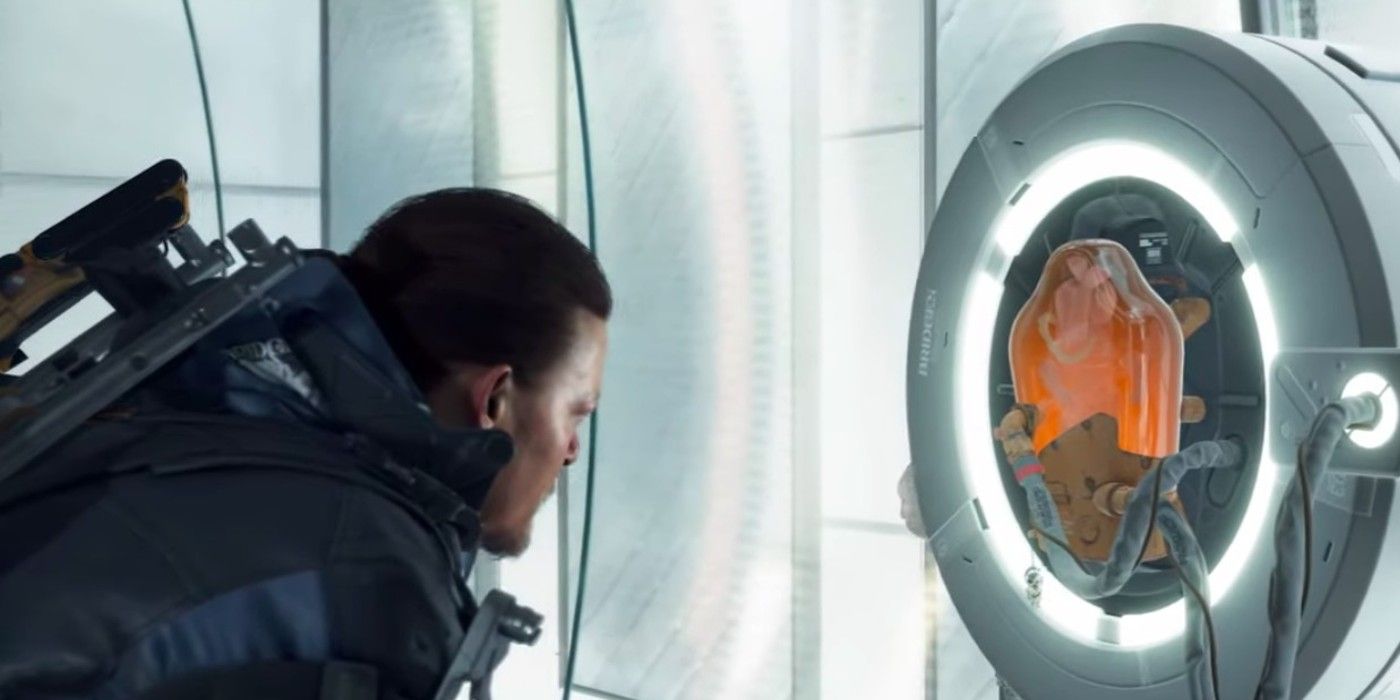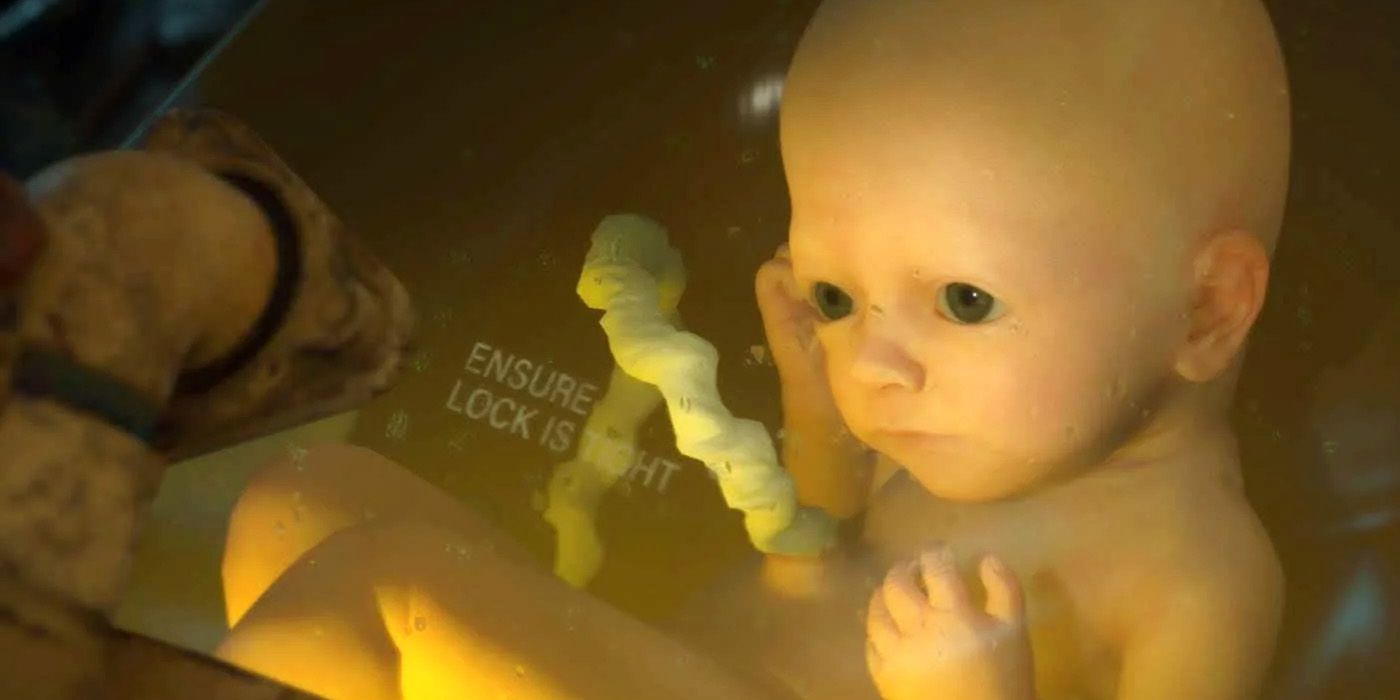Death Stranding places particular importance on Bridge Babies (BBs), which are fetuses kept in tanks that alert their keeper to the presence of Beached Things (BTs). This is an impressive ability, considering Death Stranding's BTs are invisible and only detectable by gravitational anomalies and imprints they leave behind like footprints. The company of a BB is necessary to survive Death Stranding's world, which would otherwise be an impossibility to conquer. However, the process of creating BBs is somewhat convoluted and mysterious.
Death Stranding's story hides lore throughout its world and sometimes fails to explain its phenomenon at all. Despite this lack of information, dialog and hints scattered throughout the world answer more significant questions. The Death Stranding was an apocalyptic event that resulted in unburned, deceased humans returning as demonic-like creatures. This crafts a unique relationship with the concept of life and death in Death Stranding, blurring the lines between some of nature's most steadfast rules.
As is the case with all human babies, the Bridge Babies must have a mother. These mothers are referred to as Stillmothers and are braindead, pregnant women. The women are kept in the Capital Knot City ICU, where their wombs serve as a link between both worlds so that the BB may function. Their wombs also provide Capital Knot City scientists with information to update environmental information stored within Death Stranding's BB pods. It's unknown whether Stillmothers (or their families) consented to this treatment, but given the questionable ethics surrounding many government institutions in Death Stranding, it's unlikely.
Death Stranding's Bridge Babies Are Neither Dead Nor Alive
Due to the Stillmother's status, the Bridge Babies exist between the world of the dead and the living. This connection enables them to detect Beached Things and alert their Keepers. As shown in Death Stranding's campaign, BBs must be retired once their abilities falter. A faulty BB can cause many deaths, which is no fault of the child's. Unfortunately, Bridge Babies are considered tools rather than living beings. Sam's connection with his BB in Death Stranding seems inevitable given the animated qualities of the BBs and the duties they carry out for humankind, though not all in the civilized world feel this way.
Death Stranding's world remains in a state of perpetual chaos, where the answers to the world's largest problems are not always evident. Simple solutions fail to present themselves, often complicated by more significant moral and ethical dilemmas. The use of BBs torn from Stillmothers who are trapped in their comas represents the desperate measures of a dying world. Even the BTs are creatures deserving of some level of sympathy, given that they were once people with personalities, families, and lives. Hideo Kojima is known for his dark, ambiguous stories, often crafting beautiful worlds like the one in Death Stranding.
Both BBs and Stillmothers are a vital part of surviving the world of Death Stranding, though the ethical and moral costs for their existence are high. Bridge Babies and Stillmothers occupy a unique niche in the game's "food chain," introducing more complex variables to an already complicated world. Thankfully, the story of Sam Porter Bridges and his BB 'Lou' offer some answers and closure for a rather heavy, depressing aspect of the Death Stranding narrative.


